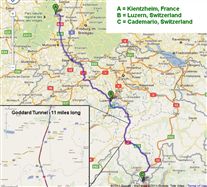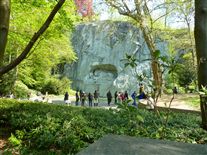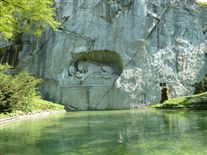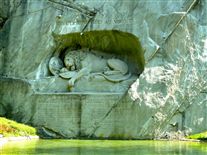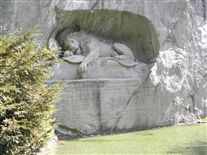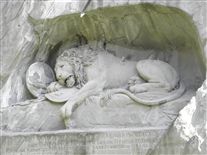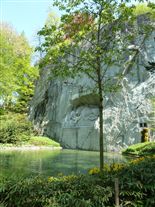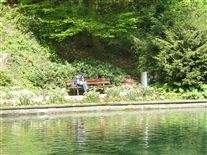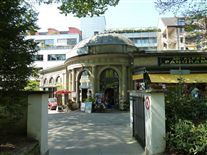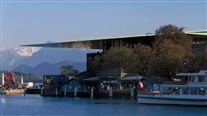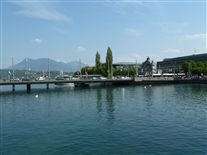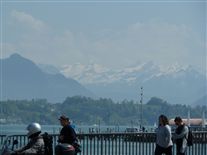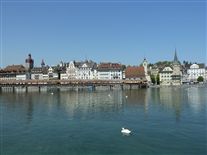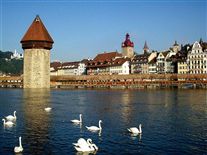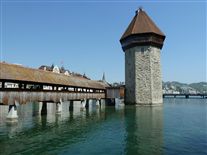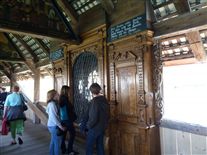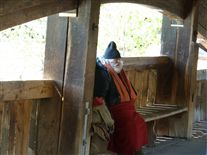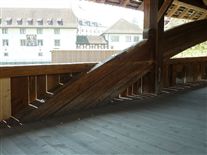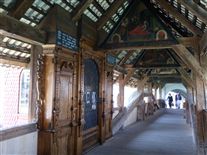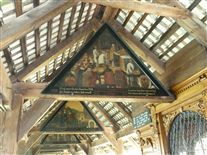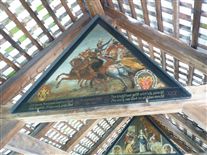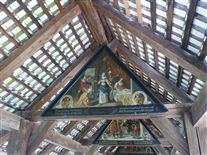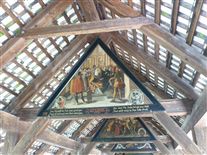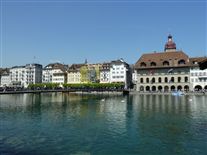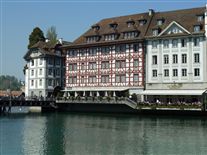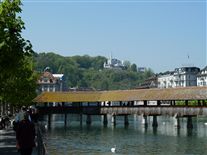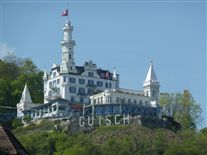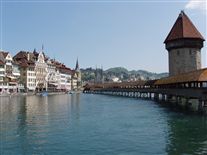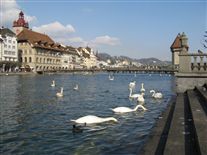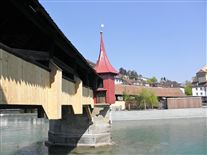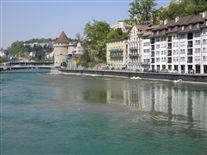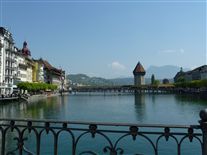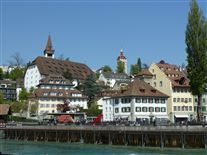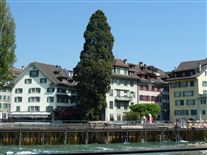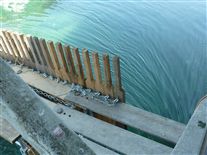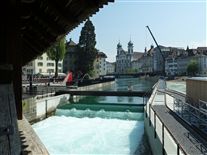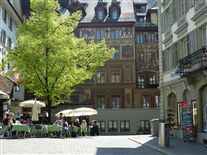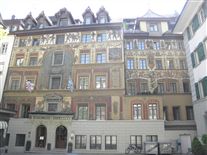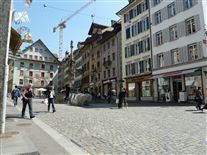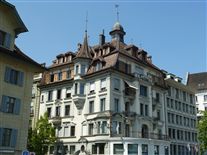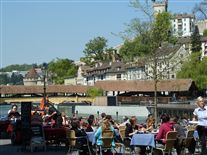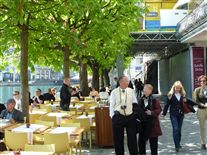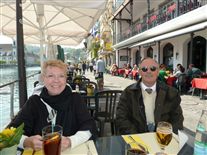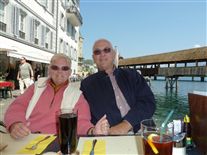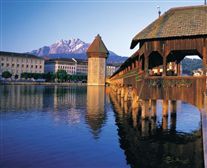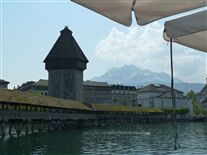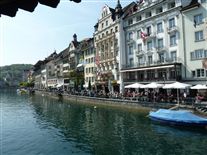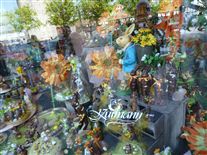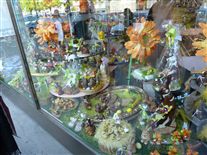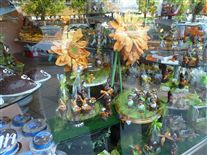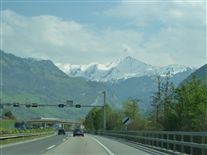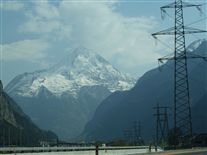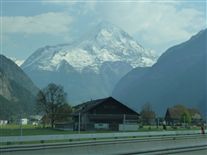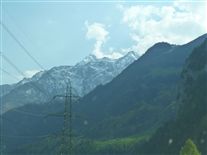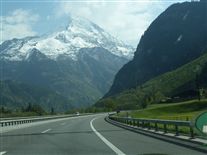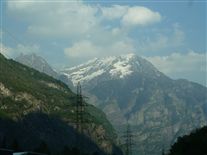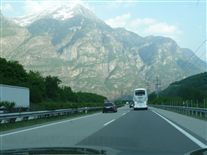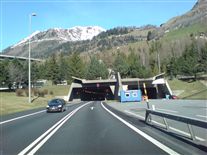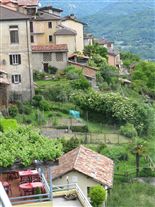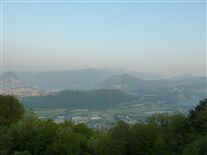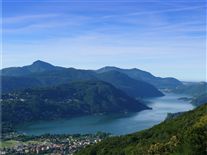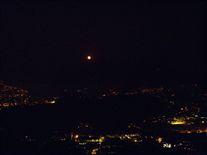Photos_-_1631.jpg
The Lion of Lucerne - Click 'Details' for more information
Background
From the early 17th century, a regiment of Swiss mercenaries had served as part of the Royal Household of France. On 6 October 1789, King Louis XVI had been forced to move with his family from the Palace of Versailles to the Tuileries Palace in Paris. In June 1791 he tried to flee abroad. In the 1792 10th of August Insurrection, revolutionaries stormed the palace. Fighting broke out spontaneously after the Royal Family had been escorted from the Tuileries to take refuge with the Legislative Assembly. The Swiss Guards ran low on ammunition and were overwhelmed by superior numbers. A note written by the King has survived, ordering the Swiss to retire and return to their barracks, but this was only acted on after their position had become untenable.
Of the Swiss Guards defending the Tuileries, more than six hundred were killed during the fighting or massacred after surrender. An estimated two hundred more died in prison of their wounds or were killed during the September Massacres that followed. Apart from about a hundred Swiss who escaped from the Tuileries, the only survivors of the regiment were a 300 strong detachment which had been sent to Normandy a few days before August 10. The Swiss officers were mostly amongst those massacred, although Major Karl Josef von Bachmann — in command at the Tuileries — was formally tried and guillotined in September, still wearing his red uniform coat. However two surviving Swiss officers went on to reach senior rank under Napoleon.
Photos_-_1635.jpg
The Lion of Lucerne - Click 'Details' for more informatio
Memorial
The initiative to create the monument was taken by Karl Pfyffer von Altishofen, an officer of the Guards who had been on leave in Lucerne at that time of the fight. He began collecting money in 1818. The monument was designed by Danish sculptor Bertel Thorvaldsen, and finally hewn in 1820–21 by Lukas Ahorn, in a former sandstone quarry near Lucerne.
The monument is dedicated Helvetiorum Fidei ac Virtuti ("To the loyalty and bravery of the Swiss"). The dying lion is portrayed impaled by a spear, covering a shield bearing the fleur-de-lis of the French monarchy; beside him is another shield bearing the coat of arms of Switzerland. The inscription below the sculpture lists the names of the officers, and approximate numbers of the soldiers who died (DCCLX = 760), and survived (CCCL = 350).[2]
Before completing the monument, the artist, Bertel Thorvaldsen, was told that not enough money had been raised to pay for his services and that he would not be fully paid for his work. Thorvaldsen wanted to make a public statement about his disdain for the situation. Out of respect for the fallen soldiers he chose not to damage the sculpture itself and decided instead to change the shape of the nook the lion lay inside. The outside edge remains in the shape of a pig to this day; a subtle but clear message of his feelings.[citation needed]
The pose of the lion was copied in 1894 by Thomas M. Brady (1849–1907)[3] for his Lion of Atlanta in the Oakland Cemetery in Atlanta, Georgia.
Photos_-_1633.jpg
The Lion of Lucerne - Click 'Details' for more information
Mark Twain on the Lion Monument
The Lion lies in his lair in the perpendicular face of a low cliff — for he is carved from the living rock of the cliff. His size is colossal, his attitude is noble. His head is bowed, the broken spear is sticking in his shoulder, his protecting paw rests upon the lilies of France. Vines hang down the cliff and wave in the wind, and a clear stream trickles from above and empties into a pond at the base, and in the smooth surface of the pond the lion is mirrored, among the water-lilies.
Around about are green trees and grass. The place is a sheltered, reposeful woodland nook, remote from noise and stir and confusion — and all this is fitting, for lions do die in such places, and not on granite pedestals in public squares fenced with fancy iron railings. The Lion of Lucerne would be impressive anywhere, but nowhere so impressive as where he is.
— Mark Twain, A Tramp Abroad, 1880
lucerne_switzerland.jpg
The Reuss River flows through Lucerne - Click 'Details' for more information
The Reuss at Lucerne
The Reuss is a river in Switzerland. With a length of 158 kilometres (98 mi) and a drainage basin of 3,425 square kilometres (1,322 sq mi), it is the fourth largest river in Switzerland (after the Rhine, Aar and Rhone). The highest point of the drainage basin is the summit of Dammastock, at 3,630 metres.
Rising in the Gotthard massif, the Reuss runs from the Urserental and continues through the Schöllenen Gorge and under the legendary Devil's Bridge (Teufelsbrücke) at St. Gotthard Pass.
It runs through Lake Lucerne (German Vierwaldstättersee) and the city of Lucerne, where a pioneering needle dam (just upstream from the Spreuerbrücke) maintains the water level.
It receives the Kleine Emme from Entlebuch at Emmen and Lorze from Lake Zug at Hünenberg. Near Bremgarten, the river is dammed forming Flachsee.
The Reuss, the Aar, and the Limmat come together near Brugg at the "Watercastle of Switzerland". After the confluence the river continues as the Aar, which flows into the Rhine, which runs through Germany into the North Sea.
Photos_-_1649.jpg
The Chapel Bridge - Click 'Details' for more information
Kapellbrücke
Location Lucerne - elevation 438 m (1,437 ft)
Length 170 m (558 ft), north-south
The Chapel Bridge (German: Kapellbrücke) is a covered wooden footbridge spanning diagonally across the Reuss River in the city of Lucerne in central Switzerland. Named after the nearby St. Peter's Chapel,[1] the bridge is unique since it contains a number of interior paintings dating back to the 17th century, although many of them were destroyed along with most of the centuries old bridge in a 1993 fire. Subsequently restored, the Kapellbrücke is the oldest wooden covered bridge in Europe,[2] as well as the world's oldest surviving truss bridge.[3] It serves as the city's symbol and as one of Switzerland's main tourist attractions.
History:
As part of the bridge complex, the Kapellbrücke includes the octagonal 140 m (460 ft) tall Wasserturm (water tower),[5] which predated the bridge by about 30 years. Throughout the centuries, the tower was variably used as a prison, torture chamber, and later a municipal archive.[6] Today, the tower is closed to the public, although it houses a local artillery association as well as a tourist gift shop.
The bridge itself was originally built in 1333 as part of Lucerne's fortifications. It linked the old town on the right bank of the Reuss to the new town on the left bank, securing the city from attack from the south (i.e. from the lake).[7] The bridge initially had a length of over 200 metres (660 ft), although due to numerous shortenings throughout the years and river bank replenishments, the bridge now totals only 170 metres (560 ft) in length.[6] It is the oldest surviving truss bridge in the world, consisting of strutted and triangulated trusses of moderate span, supported on piled trestles; as such, it is probably an evolution of the strutted bridge.[3]
The Kapellbrücke almost burned down on August 18, 1993, destroying two thirds of its interior paintings. Shortly thereafter, the Kapellbrücke was reconstructed and again opened to the public on April 14, 1994 for a total of $2.1 million dollars.[6]
[edit] PaintingsLucerne is unique in the fact that its three wooden pedestrian bridges, the 14th century Hofbrücke (now destroyed) and Kapellbrücke and the 16th century Spreuerbrücke, all featured painted interior triangular frames. This feature is not replicated in any of Europe's other wooden footbridges.[7] The paintings, dating back to the 17th century by local Catholic painter Hans Heinrich Wägmann, depict events from Lucerne's history. Out of the original 158 paintings, a total of 147 existed before the 1993 fire.[7] After the fire, the remains of 47 paintings were collected, although only 30 were ultimately fully restored.[7]
The wooden boards upon which the paintings were painted on were from 150 centimetres (59 in) to 181 centimetres (71 in) wide and 85 centimetres (33 in) to 95 centimetres (37 in) wide. Most of the panels were made from spruce wood boards, while only a few were made from linden wood and maple. The paintings were created during the time of the Counter-Reformation, featuring scenes promoting the Catholic Church. The paintings themselves were sponsored by the city's council members, who upon sponsoring a panel, were allowed to attribute their personal coat of arms on it. A explanation of each painting was printed below each scene. The paintings ran all along the bridge, dating from the life and death of Lucerne's patron saint St. Leger to the legends of the city's other patron saint St. Maurice.
Goddhart.jpg
Gotthard Tunnel - Click 'Details' for more information
Gotthard Road Tunnel
The south side with the second tunnel, never used for road traffic, shown on the right.The St. Gotthard Tunnel in Switzerland runs from Göschenen in the Canton of Uri at its northern portal, to Airolo in Ticino to the south, and is just under 16.4 kilometres (10.5 miles) in length below the St. Gotthard Pass. It is the third-longest road tunnel in the world after Norway's Lærdal Tunnel (24.5 km), and China's Zhongnanshan Tunnel (18 km).
History:
The Swiss government gave approval in July 1969 for the construction of the 16 kilometer Gotthard Road tunnel with four large ventilation shafts and an additional side gallery between 10 and 18 meters from the main tunnel, having its own independent ventilation system in order to facilitate the cutting of a second tunnel, should future traffic levels require it.[1] The tunnel would be longer than any existing road tunnel, and would provide year-round road link between central Switzerland and Milan to be used in place of the Gotthard Pass.[1]
The now widely used motorway tunnel was opened on September 5, 1980, in response to the automobile boom in Switzerland and the popularity of Italy as a travel resort. It remains a single bore tunnel with just one lane operating in each direction.
On Friday, October 24, 2001, a collision of two trucks created a fire in the tunnel, killing eleven and injuring many more, the smoke and gases produced by the fires being the main cause of death. The effects of even small fires in a confined space like a tunnel are extremely serious due to an inability for gases and heat to disperse. For instance carbon monoxide is highly toxic at very low concentrations, having this trapped in a confined space would allow concentrations to build well beyond a fatal level. The tunnel was closed for two months after the accident for repair and cleaning up.
